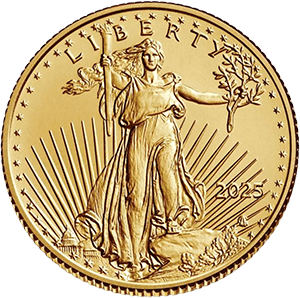Every Federal Reserve meeting carries weight, but moments of heightened uncertainty — shifting inflation trends, uneven labor-market signals, and volatile global conditions — make the Fed’s upcoming commentary especially important. Whether you follow markets casually or closely, understanding what the Fed is likely to say (and what it is really signaling) can help you see the broader economic direction for the months ahead.
This article breaks down the Fed’s likely themes, how policymakers interpret current conditions, and what the implications are for interest rates, growth, financial markets, and the broader economy.
1. The Fed’s Current Policy Position
The Federal Reserve has already entered a more flexible phase of monetary policy. After a long period of elevated rates designed to slow inflation, the central bank has become more data-dependent and less committed to a fixed path.
Recent Actions Set the Stage
The Fed recently cut rates by 25 basis points, lowering the federal funds target range to roughly 3.75%–4.00%. While this moved monetary policy in a more accommodative direction, the Fed emphasized that:
-
Inflation is still above its long-term 2% target
-
The economic outlook remains highly uncertain
-
Further cuts are possible but not guaranteed
This “one foot on the brake, one foot hovering over the accelerator” posture is what makes the upcoming commentary so important: it will clarify which direction the Fed sees itself heading next.
2. The Three Forces Driving the Fed’s Messaging
A. Inflation That Has Cooled — But Not Enough
Inflation has come down meaningfully from its peaks, but remains sticky in areas like housing, services, insurance, and certain consumer goods.
Key points the Fed is likely to address:
-
Inflation progress has slowed, signaling that returning fully to 2% may take longer than expected
-
Upside risks remain, including supply shocks, energy volatility, and geopolitical events
-
Household inflation expectations have eased, but haven’t normalized
Expect the Fed to reiterate that progress is being made — but not at a pace that gives them unrestricted freedom to cut rates aggressively.
B. A Labor Market Losing Some Momentum
The Fed is laser-focused on the job market, because employment is one half of its dual mandate. Recent data suggest:
-
Job creation has slowed from earlier highs
-
Wage growth is moderating
-
The unemployment rate has edged up, though it remains historically low
-
Some industries (transportation, manufacturing, retail) are showing signs of softness
You may hear language such as “risks to employment have increased” — a signal that the Fed is now watching for economic cooling that could spill into broader weakness.
C. Financial Stability and Market Functioning
The Fed has recently slowed its balance sheet runoff, meaning it is no longer reducing its holdings of Treasury and mortgage-backed securities at the same prior pace. This impacts:
-
Bank liquidity
-
Financial-market depth
-
Treasury yields
-
Mortgage rates
The upcoming commentary may revisit this topic, not as a headline item, but as part of the underlying plumbing of monetary policy.
3. What the Fed Is Likely to Emphasize in Its Statement
Fed statements are carefully worded. Every phrase is measured, debated, and tested. Based on recent patterns, you can expect commentary centered on:
1. Data Dependence
The Fed will repeat that decisions depend on incoming economic data — inflation, jobs, manufacturing, consumer spending, and global trends.
2. The Path for Interest Rates
The key question:
Will the Fed signal more cuts, a pause, or a slower path forward?
The Fed will likely avoid making specific commitments, but subtle wording shifts will matter, especially statements like:
-
“policy remains modestly restrictive”
-
“risks to the outlook are balanced”
-
“the Committee will carefully assess additional data”
These phrases tell investors whether the Fed leans hawkish (more cautious) or dovish (more open to easing).
3. Inflation Risks
Expect renewed focus on:
-
Services inflation
-
Shelter costs
-
Potential energy shocks
-
Wage-price persistence
If the Fed believes inflation could flare again, it will lean toward a cautious stance on future cuts.
4. Economic Growth Expectations
The commentary may address:
-
Slowing consumer spending
-
Weakness in business investment
-
Changes in GDP growth forecasts
-
Credit-market conditions
Stronger growth language → fewer cuts
Weaker growth language → more support for easing policy
4. The Key Phrases to Listen For
The upcoming commentary will be dense, but a few phrases pack the most meaning:
“Further adjustments will depend on the evolution of the outlook.”
Translation: the Fed is not committing to anything.
“Inflation has eased but remains elevated.”
Translation: we’re not done.
“Employment gains have moderated.”
Translation: we see the slowdown.
“Risks to the outlook have become more balanced.”
Translation: future cuts are increasingly possible.
“The Committee remains attentive to inflation risks.”
Translation: we’re still worried about price pressures.
These sentences hint at whether the Fed believes it has more work to do — or whether easing financial conditions will soon become the priority.
5. How Markets Typically React to Fed Commentary
Even when the Fed doesn’t change rates, markets move. That's because traders react less to what the Fed does and more to what the Fed says.
Common market dynamics include:
A. Interest Rates and Bond Yields
If the Fed sounds hawkish → yields rise
If the Fed sounds dovish → yields fall
B. Stock Market Sentiment
Dovish tone → growth stocks and rate-sensitive sectors may rally
Hawkish tone → markets tend to sell off
C. Currency Movements
Dovish Fed → weaker dollar
Hawkish Fed → stronger dollar
D. Commodities and Real Assets
Shifts in real interest rates impact metals, energy, and commodities broadly.
But the key point: markets will interpret the tone, not just the decision.
6. What This Means for the Broader Economy
The Fed’s upcoming commentary is essentially a preview of how policymakers plan to balance:
-
Price stability
-
Employment
-
Financial-system health
-
Economic growth
-
Global risks
The central challenge right now is managing the “long tail” of inflation pressure while not tightening conditions so much that it slows the economy too sharply.
The Fed’s interpretation of the current environment will shape:
-
Mortgage rates
-
Credit card and loan rates
-
Business financing
-
Corporate investment
-
Consumer confidence
And ultimately, the overall trajectory of U.S. economic activity.
7. The Bottom Line
The upcoming Federal Reserve commentary is likely to be measured, cautious, and data-focused. While the Fed has begun easing rates, policymakers remain concerned about inflation that is not yet fully tamed and a labor market beginning to show signs of fatigue.
Expect the Fed to:
-
Reiterate commitment to bringing inflation to 2%
-
Emphasize evolving risks in the labor market
-
Avoid promising a specific timeline for future cuts
-
Highlight uncertainty in both domestic and global conditions
-
Signal a willingness to pivot if economic data weakens further
Above all, the message will likely reinforce one theme:
The Fed is not on autopilot — it is navigating a complex, shifting environment in real time.


